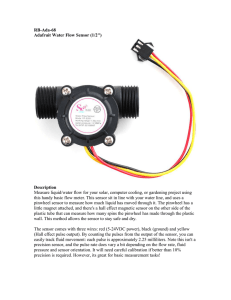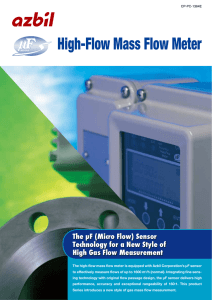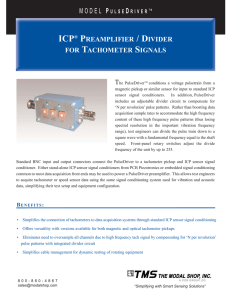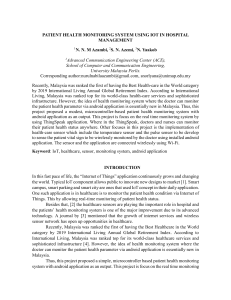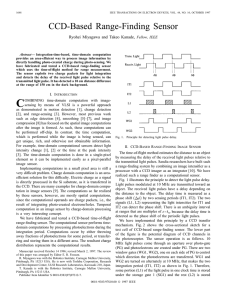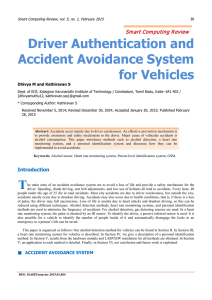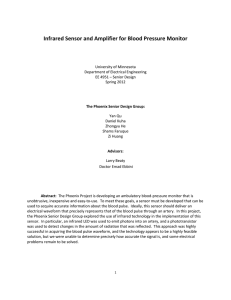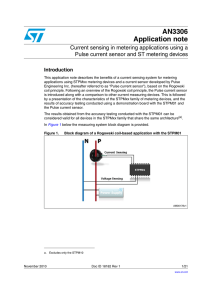practicalproblem2Fall2005.doc
advertisement
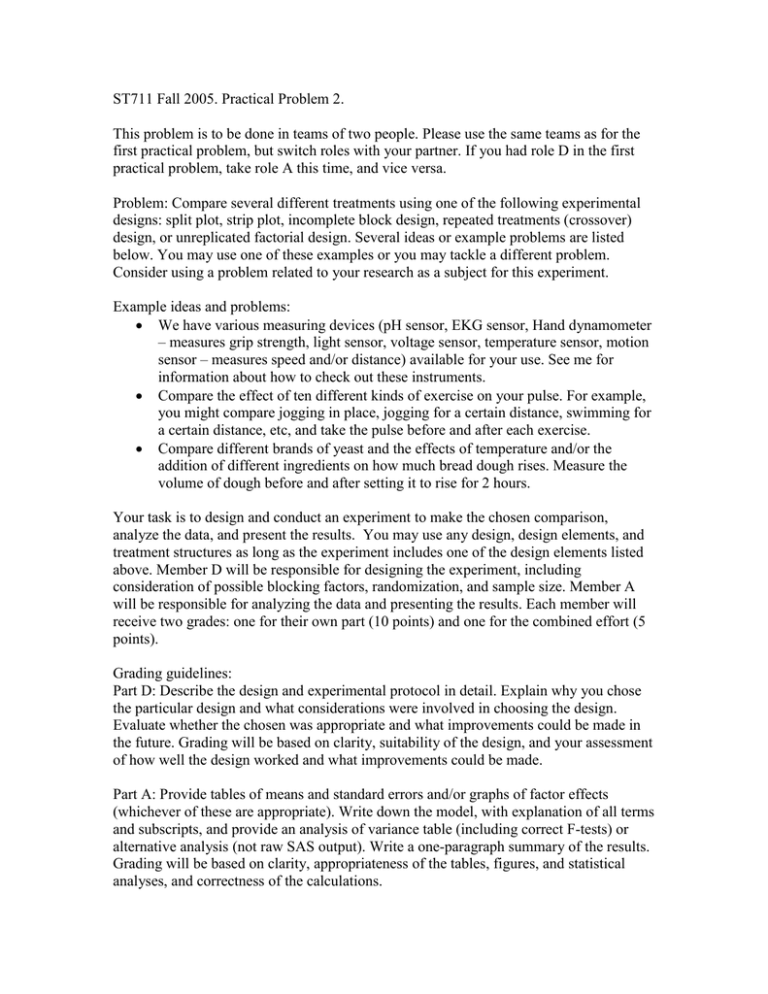
ST711 Fall 2005. Practical Problem 2. This problem is to be done in teams of two people. Please use the same teams as for the first practical problem, but switch roles with your partner. If you had role D in the first practical problem, take role A this time, and vice versa. Problem: Compare several different treatments using one of the following experimental designs: split plot, strip plot, incomplete block design, repeated treatments (crossover) design, or unreplicated factorial design. Several ideas or example problems are listed below. You may use one of these examples or you may tackle a different problem. Consider using a problem related to your research as a subject for this experiment. Example ideas and problems: We have various measuring devices (pH sensor, EKG sensor, Hand dynamometer – measures grip strength, light sensor, voltage sensor, temperature sensor, motion sensor – measures speed and/or distance) available for your use. See me for information about how to check out these instruments. Compare the effect of ten different kinds of exercise on your pulse. For example, you might compare jogging in place, jogging for a certain distance, swimming for a certain distance, etc, and take the pulse before and after each exercise. Compare different brands of yeast and the effects of temperature and/or the addition of different ingredients on how much bread dough rises. Measure the volume of dough before and after setting it to rise for 2 hours. Your task is to design and conduct an experiment to make the chosen comparison, analyze the data, and present the results. You may use any design, design elements, and treatment structures as long as the experiment includes one of the design elements listed above. Member D will be responsible for designing the experiment, including consideration of possible blocking factors, randomization, and sample size. Member A will be responsible for analyzing the data and presenting the results. Each member will receive two grades: one for their own part (10 points) and one for the combined effort (5 points). Grading guidelines: Part D: Describe the design and experimental protocol in detail. Explain why you chose the particular design and what considerations were involved in choosing the design. Evaluate whether the chosen was appropriate and what improvements could be made in the future. Grading will be based on clarity, suitability of the design, and your assessment of how well the design worked and what improvements could be made. Part A: Provide tables of means and standard errors and/or graphs of factor effects (whichever of these are appropriate). Write down the model, with explanation of all terms and subscripts, and provide an analysis of variance table (including correct F-tests) or alternative analysis (not raw SAS output). Write a one-paragraph summary of the results. Grading will be based on clarity, appropriateness of the tables, figures, and statistical analyses, and correctness of the calculations.


